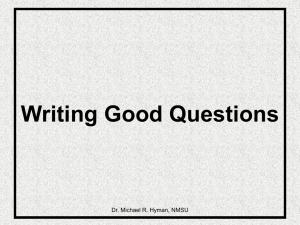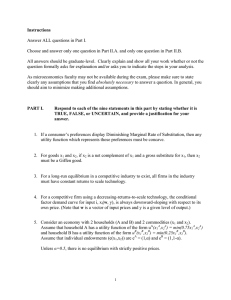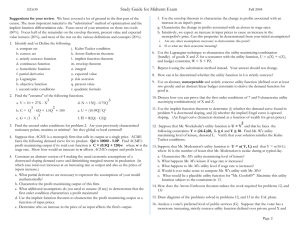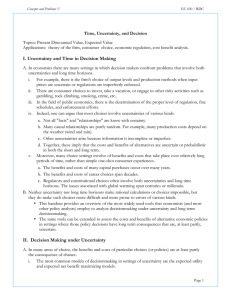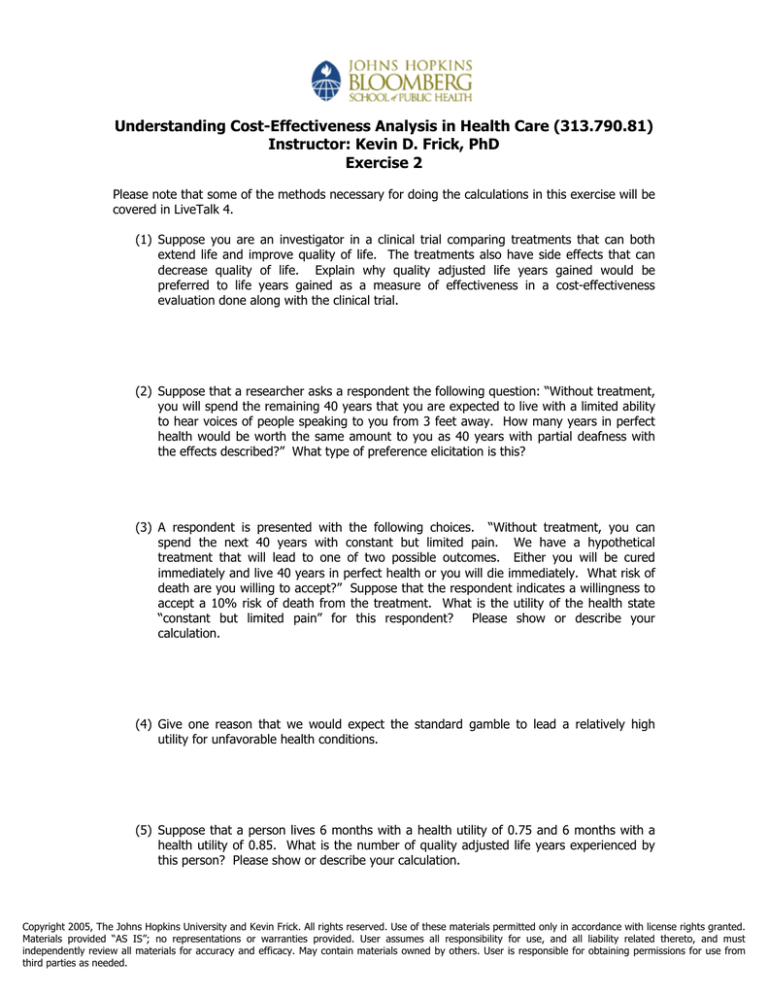
Understanding Cost-Effectiveness Analysis in Health Care (313.790.81)
Instructor: Kevin D. Frick, PhD
Exercise 2
Please note that some of the methods necessary for doing the calculations in this exercise will be
covered in LiveTalk 4.
(1) Suppose you are an investigator in a clinical trial comparing treatments that can both
extend life and improve quality of life. The treatments also have side effects that can
decrease quality of life. Explain why quality adjusted life years gained would be
preferred to life years gained as a measure of effectiveness in a cost-effectiveness
evaluation done along with the clinical trial.
(2) Suppose that a researcher asks a respondent the following question: “Without treatment,
you will spend the remaining 40 years that you are expected to live with a limited ability
to hear voices of people speaking to you from 3 feet away. How many years in perfect
health would be worth the same amount to you as 40 years with partial deafness with
the effects described?” What type of preference elicitation is this?
(3) A respondent is presented with the following choices. “Without treatment, you can
spend the next 40 years with constant but limited pain. We have a hypothetical
treatment that will lead to one of two possible outcomes. Either you will be cured
immediately and live 40 years in perfect health or you will die immediately. What risk of
death are you willing to accept?” Suppose that the respondent indicates a willingness to
accept a 10% risk of death from the treatment. What is the utility of the health state
“constant but limited pain” for this respondent? Please show or describe your
calculation.
(4) Give one reason that we would expect the standard gamble to lead a relatively high
utility for unfavorable health conditions.
(5) Suppose that a person lives 6 months with a health utility of 0.75 and 6 months with a
health utility of 0.85. What is the number of quality adjusted life years experienced by
this person? Please show or describe your calculation.
Copyright 2005, The Johns Hopkins University and Kevin Frick. All rights reserved. Use of these materials permitted only in accordance with license rights granted.
Materials provided “AS IS”; no representations or warranties provided. User assumes all responsibility for use, and all liability related thereto, and must
independently review all materials for accuracy and efficacy. May contain materials owned by others. User is responsible for obtaining permissions for use from
third parties as needed.




